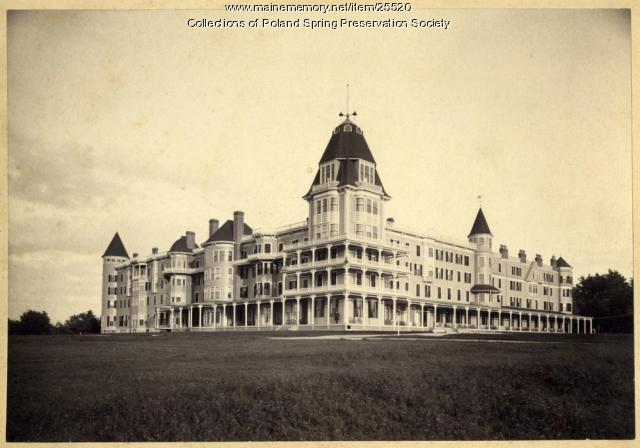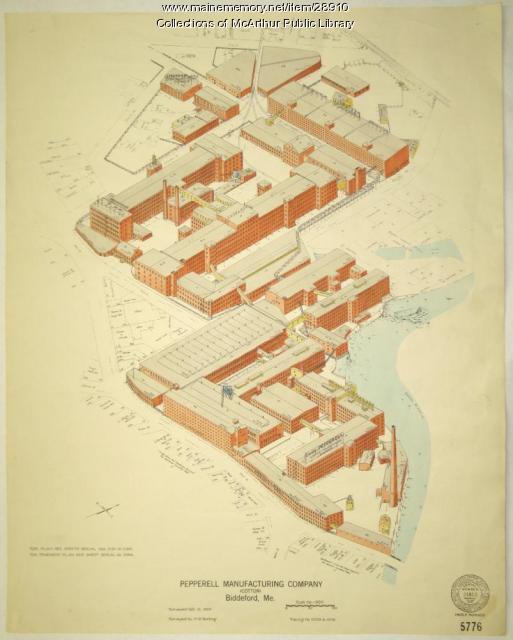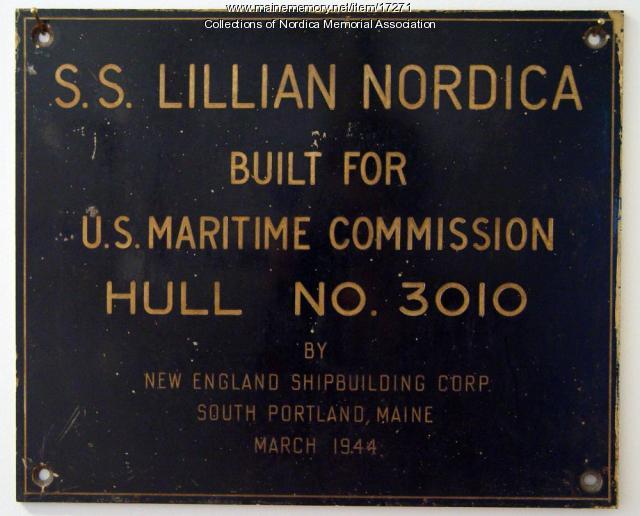Keywords: Technology
- Historical Items (2041)
- Tax Records (0)
- Architecture & Landscape (41)
- Online Exhibits (63)
- Site Pages (313)
- My Maine Stories (74)
- Lesson Plans (8)
Online Exhibits
Your results include these online exhibits. You also can view all of the site's exhibits, view a timeline of selected events in Maine History, and learn how to create your own exhibit. See featured exhibits or create your own exhibit
Exhibit
When America entered the Great War in 1917, the government sent out pleas for help from American women, many of whom responded at the battle front and on the home front.
Exhibit
In 1893, F.C. Whitehouse of Topsham, who owned paper mills in Topsham and Lisbon Falls, began construction of a third mill on the eastern banks of the Androscoggin River five miles north of Topsham. First, he had to build a dam to harness the river's power.
Exhibit
Capt. Grenville F. Sparrow, 17th Maine
Grenville F. Sparrow of Portland was 25 when he answered Lincoln's call for more troops to fight the Confederates. He enlisted in Co. A of Maine's 17th Volunteer Infantry regiment. He fought in 30 battles between 1862 and the war's end in 1865.
Exhibit
Poland Spring: Summering in Fashion
During the Gilded Age at the end of the nineteenth century, Americans sought to leave increasing urban, industrialized lives for the health and relaxation of the country. The Poland Spring resort, which offered a beautiful setting, healing waters, and many amenities, was one popular destination.
Exhibit
Biddeford, Saco and the Textile Industry
The largest textile factory in the country reached seven stories up on the banks of the Saco River in 1825, ushering in more than a century of making cloth in Biddeford and Saco. Along with the industry came larger populations and commercial, retail, social, and cultural growth.
Exhibit
Rumford's Notable Citizens in the Civil War
A number of Rumford area residents played important roles during the Civil War -- and in the community afterwards. Among these are William King Kimball, who commanded the 12th Maine for much of the war.
Exhibit
Sarah Sampson: Caring for Soldiers, Orphans
Sarah Sampson of Bath went to war with her husband, a captain in the 3rd Maine Regiment. With no formal training, she spent the next four and a half years providing nursing and other services to soldiers. Even after her husband became ill and returned to Maine, Sampson remained in the Washington, D.C., area aiding the sick and wounded.
Exhibit
By the second half of the 20th century, skiing began to enjoy unprecedented popularity. Pleasant Mountain in Bridgton (later Shawnee Peak) was Maine's foremost place to join the fun in the 1950s and 1960s.
Exhibit
Desserts have always been a special treat. For centuries, Mainers have enjoyed something sweet as a nice conclusion to a meal or celebrate a special occasion. But many things have changed over the years: how cooks learn to make desserts, what foods and tools were available, what was important to people.
Exhibit
KVVTI's Gilman Street Campus, 1978-1986
The Gilman Street building began its life in 1913 as Waterville High School, but served from 1978 to 1986 as the campus of Kennebec Valley Vocational Technical Institute. The building helped the school create a sense of community and an identity.
Exhibit
When Europeans arrived in North America and disrupted traditional Native American patterns of life, they also offered other opportunities: trade goods for furs. The fur trade had mixed results for the Wabanaki.
Exhibit
South Portland's Wartime Shipbuilding
Two shipyards in South Portland, built quickly in 1941 to construct cargo ships for the British and Americans, produced nearly 270 ships in two and a half years. Many of those vessels bore the names of notable Mainers.
Exhibit
Fair Season: Crops, Livestock, and Entertainment
Agricultural fairs, intended to promote new techniques and better farming methods, have been held since the early 19th century. Before long, entertainments were added to the educational focus of the early fairs.
Exhibit
History in Motion: The Era of the Electric Railways
Street railways, whether horse-drawn or electric, required the building of trestles and tracks. The new form of transportation aided industry, workers, vacationers, and other travelers.
Exhibit
Maine's frozen rivers and lakes provided an economic opportunity. The state shipped thousands of tons of ice to ports along the East Coast and to the West Indies that workers had cut and packed in sawdust for shipment or later use.
Exhibit
Fashion for the People: Maine's Graphic Tees
From their humble beginnings as undergarments to today's fashion runways, t-shirts have evolved into universally worn wardrobe staples. Original graphic t-shirts, graphic t-shirt quilts, and photographs trace the 102-year history of the garment, demonstrating how, through the act of wearing graphic tees, people own a part of history relating to politics, social justice, economics, and commemorative events in Maine.
Exhibit
Maine Through the Eyes of George W. French
George French, a native of Kezar Falls and graduate of Bates College, worked at several jobs before turning to photography as his career. He served for many years as photographer for the Maine Development Commission, taking pictures intended to promote both development and tourism.
Exhibit
John Dunn, 19th Century Sportsman
John Warner Grigg Dunn was an accomplished amateur photographer, hunter, fisherman and lover of nature. On his trips to Ragged Lake and environs, he became an early innovator among amateur wildlife photographers. His photography left us with a unique record of the Moosehead Lake region in the late nineteenth century.
Exhibit
The rocky coastline of Cape Elizabeth has sent many vessels to their watery graves.
Exhibit
Navy Firefighting School, Little Chebeague Island
Little Chebeague Island in Casco Bay was home to recreational facilities and a firefighting school for WWII sailors. The school was part of a Navy effort to have non-firefighting personnel knowledgeable in dealing with shipboard fires.
Exhibit
A Riot of Words: Ballads, Posters, Proclamations and Broadsides
Imagine a day 150 years ago. Looking down a side street, you see the buildings are covered with posters and signs.
Exhibit
Yarmouth's "Third Falls" provided the perfect location for papermaking -- and, soon, for producing soda pulp for making paper. At the end of the 19th century and beginning of the 20th, Yarmouth was an international leader in soda pulp production.
Exhibit
The Advent of Green Acre, A Baha'i Center of Learning
The Green Acre Baha'i School began as Green Acre Conferences, established by Sarah Jane Farmer in Eliot. She later became part of the Baha'i Faith and hosted speakers and programs that promoted peace. In 1912, the leader of the Baha'i Faith, 'Abdu'l-Baha, visited Green Acre, where hundreds saw him speak.
Exhibit
Paper has shaped Maine's economy, molded individual and community identities, and impacted the environment throughout Maine. When Hugh Chisholm opened the Otis Falls Pulp Company in Jay in 1888, the mill was one of the most modern paper-making facilities in the country, and was connected to national and global markets. For the next century, Maine was an international leader in the manufacture of pulp and paper.
























